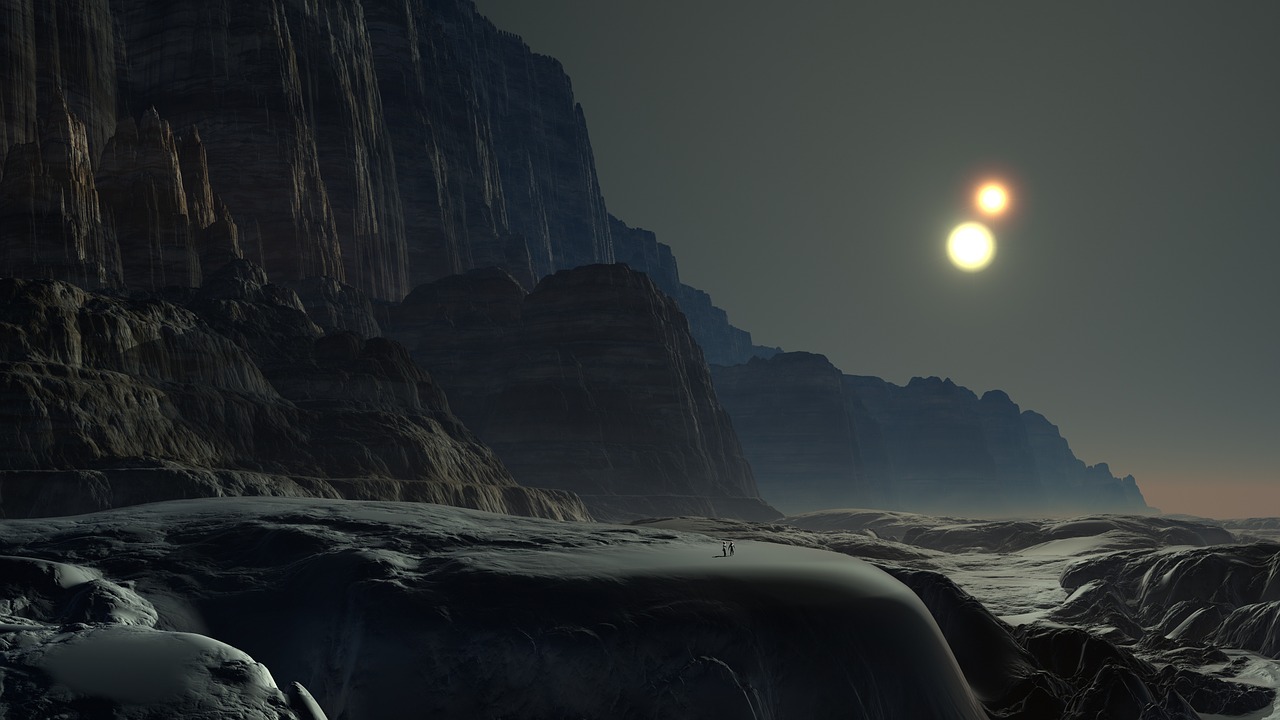
Right now the goal of SpaceX is to colonise Mars. This is the nearest planet that we could feasibly travel to and inhabit. Soon our technological capabilities will allow us to travel to, and live on, the red planet in a cost-efficient and sustainable way. Science fiction will become reality. But there is no reason that our thirst for space exploration and colonisation would end on the Red Planet. Many sci-fi books deal with the topic of space colonisation. Colonising planets other than Mars could become a reality in the future. But which ones planets are good candidates?
An exoplanet is a planet that orbits a star other than the Sun, so it lies outside of our Solar System. We have discovered many exoplanets that our descendants could potentially colonise. Scientists have claimed that these planets fall into a ‘habitable zone’ – the area around a star in which a planet similar to Earth could have liquid water on its surface. Without this, it is impossible for a planet to host life as we know it.
There are other features that exoplanets should have if they are to be hospitable to life, including being rocky rather than gaseous. Also the radius and mass of the planet should be 0.5-1.5 times and 0.1-5.0 times that of Earth, respectively.
Of course, the closer the planet is to Earth the better, since a shorter journey obviously involves using less energy, and is less demanding on the physical and psychological health of the astronauts.
One candidate is GJ 667C e, an unconfirmed planet that is 22 light-years from Earth in the constellation Scorpius. It pushes the boundary of an acceptable radius for a habitable planet (1.0-1.8 times the radius of Earth), but its mass is greater than or equal to 2.7 times that of Earth. The presence of liquid water is possible.
One issue is that the planet is tidally locked, which means that one half is hot and one half is cold. While this may limit how much of the planet is habitable, this doesn’t change the fact that it could still support human life.
Another candidate is Kapteyn b, which is 13 light-years away in the constellation Pictor. It is estimated to be about eight billion years old. It too is still waiting for confirmation as a planet. But enough is known about it to make it an exoplanet that we’d be likely to explore in the future for colonisation.
It’s worth bearing in mind how far a light-year is: the distance that light travels in a year (nearly 6 million miles). So if we want to go to Kapteyn b, we will have to travel about 81 million miles. Okay, that sounds pretty far. How long is that journey? Well, using existing technology, it would take just under 20,000 years to travel one light-year. Therefore, to travel 13 light-years will take 260,000 years. If we were to make this journey now, astronauts would need to have kids, train their children to become astronauts, and have everything on board to sustain human life in a spaceship for that amount of time.
What other options do we have? Well, both scientists and hard science fiction authors have proposed several hypothetical starship concepts. These include:
- A generation ship that would travel much slower than light, but with the trip taking many decades or centuries. The crew would go through generations before the journey is complete.
- A sleep ship, in which the crew spend the journey in some kind of suspended animation, so they can survive until the end.
- A nuclear fusion or fission powered ship, achieving up to perhaps 10% the speed of light. The duration of the journey could be the length of a human lifetime.
What interests me, however, is what our planet colonising ventures will look like. Some critical theorists have voiced concerns that our colonisation of other planets will be a venture that will only benefit an elite minority of ‘space capitalists’, intent on treating other planets simply as treasure troves of valuable resources. If capitalist ideology is extended into outer space and planet colonisation, there is a risk that these endeavours will repeat the problems of capitalism on Earth, including monopolisation and the over-exploitation of precious resources. To make the colonisation of exoplanets sustainable in the long-term, we will need an ideology that can realistically support that aim.